First Hand is a non-fiction graphic novel anthalogy that looks at the real India

First Hand, Graphic Non-Fiction from India Volume 1, edited by Orijit Sen and Vidyun Sabhaney, Yoda Press, Rs 595
![]() Comics turn a new leaf in India with First Hand, an anthology of non-fiction comics published by Yoda Press. There is no super hero in a cape or a clown here but stories about India that reflect the social realities of the country.
Comics turn a new leaf in India with First Hand, an anthology of non-fiction comics published by Yoda Press. There is no super hero in a cape or a clown here but stories about India that reflect the social realities of the country.
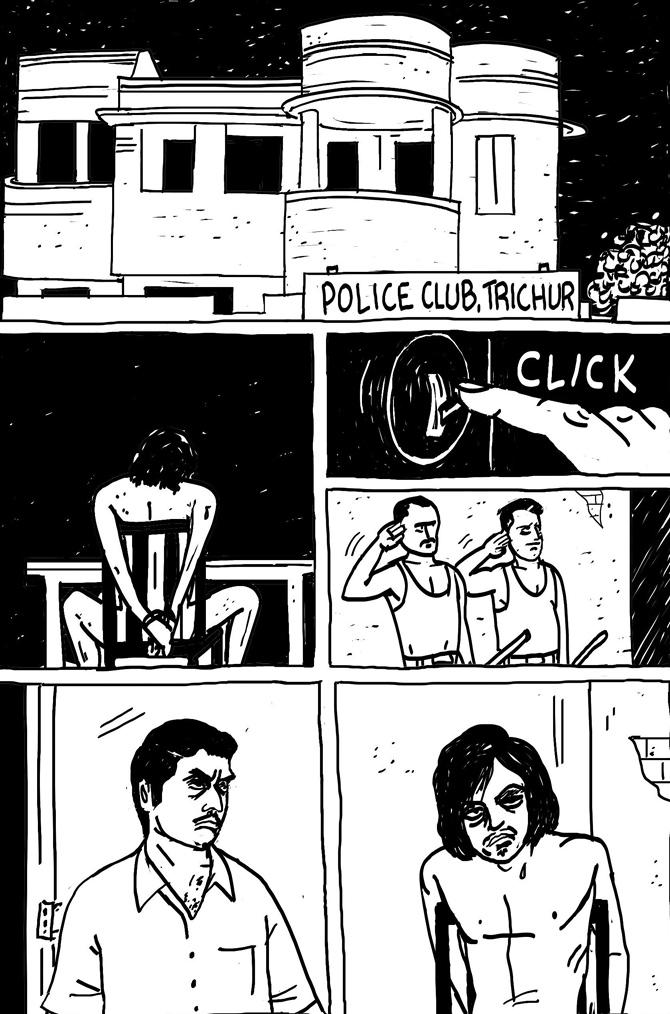
Nawab by Gokul Gopalakrishnan is the story of a conscientious editor, who was arrested and tortured during the Emergency and spent the rest of his life fighting for democratic rights and against corruption
ADVERTISEMENT
Once the publishers declared their intent to work on a non-fiction anthology, the editors Vidyun Sabhaney and Orijit Sen got an overwhelming response with 50 stories from contributors across the country.
“The idea of non-fiction is not particularly novel in the medium of comics — in fact, it has a relationship with depicting the real world that is as old (perhaps older) and as robust as its infamous association with superheroes. Comics like Maus (Art Spiegelman), Palestine (Joe Sacco), Barefoot Gen (Keiji Nakazawa) and Persepolis (Marjane Satrapi), to name a few biggies, have captured even the popular imagination,” writes Sabhaney in the preface of the anthology.
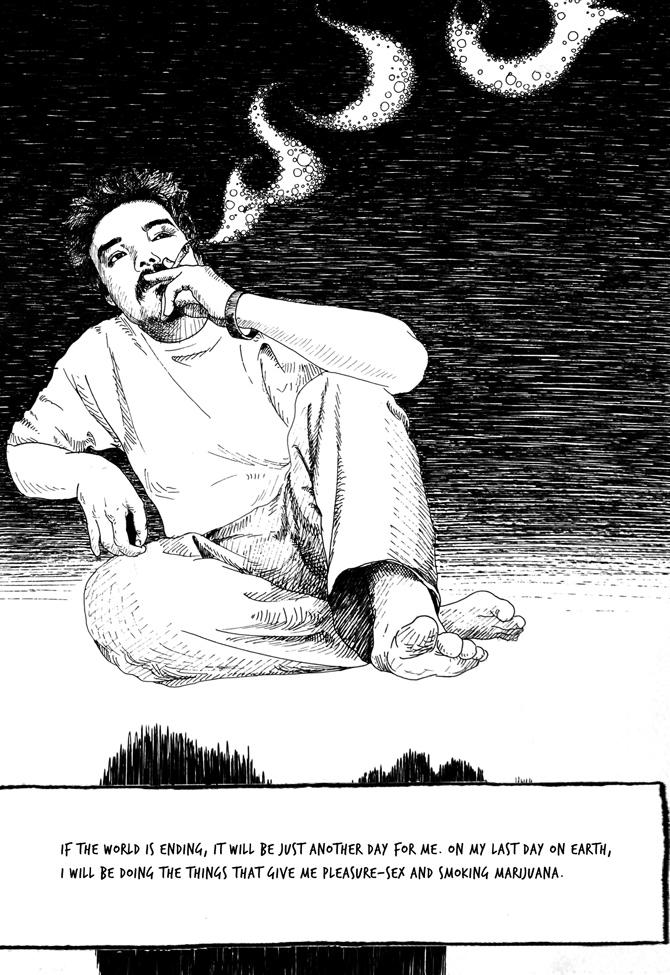
In the story Apocalypse by Akash Gaur, people are asked about what they would do to save themselves from doomsday. The person in the picture says, “If the world is ending, it will be just another day for me. I will be doing things that give me pleasure — sex and smoking marijuana.”
She explains what works for non-fiction comics. “Evocatively-drawn (and successful) comics often don’t have the most skilled or, even, technically correct drawings; they rely on an eye for detail, a sense of rhythm and style. The lens is always, in one way or another, subjective to the person creating it. This is, perhaps, where the real appeal of non-fiction comics lies: the opportunity to enter another person’s real world, but as they see it. In this way, comics give its creators tremendous political agency to counter an establishment view. It allows readers and writers to re-enter their world through the rupture of a new visual lens, giving both an opportunity to break from the dominant narratives of the times,” she writes.
The rich comics of the first anthology of First Hand have done that successfully, telling stories of our times. The story, Calcutta Kid, for example, is about a child growing up in the city in the 1980s and ‘90s when religion did not mean much. Even though people thronged to pandals in hordes during Durga Puja it was mostly because of the food.
In fact, the author calls up home when asked about her caste for the first time. In the story Nawab, we are introduced to a conscientious editor who was jailed and subjected to torture during the emergency. For the rest of his life, he spent unearthing corruption and fighting injustices, to only die homeless and penniless in a hotel room.
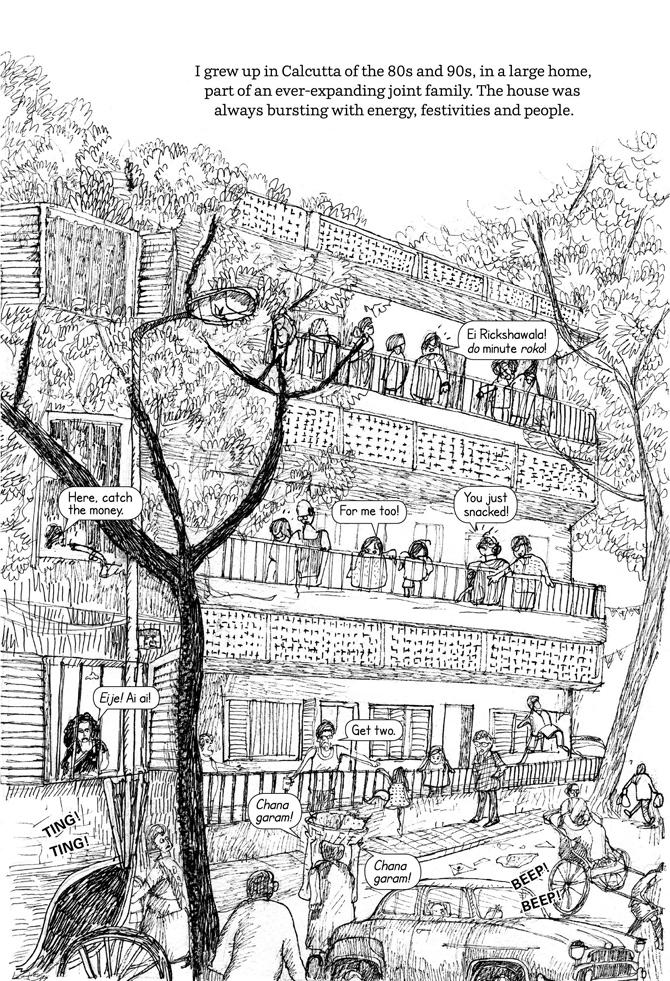
The story Calcutta Kid by Rukminee Guha Thakurta and Nityan Unnikrishnan is about the experience of growing up in the city in the 1980s and ’90s, when religion did not mean much
Orijit Sen, the co-editor of the anthology, explains that it was in fact narrowing in on what could be categorised as non-fiction.
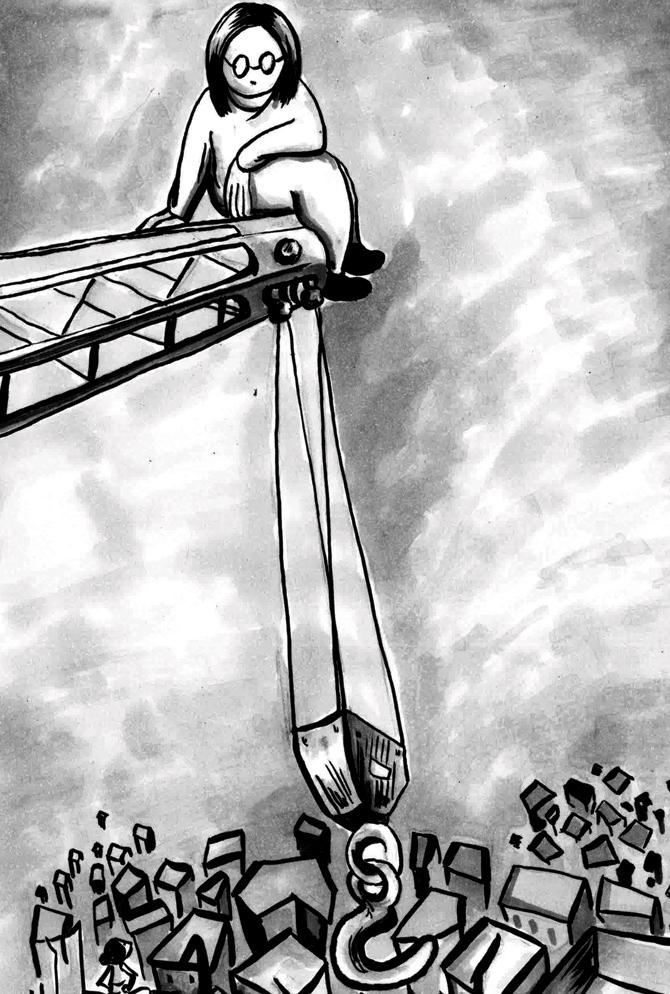
Metromorphosis by Ita Mehrotra is a reflection on labour and its changing patterns in cities like Delhi
“It is difficult to say what is actually non-fiction. There are arguments claiming that every story is non-fiction and vice versa. So we bypassed the meta debates for now and zeroed in on some accepted genre like autobiography, documentary, oral history, biography, commentary and reportage,” he says.
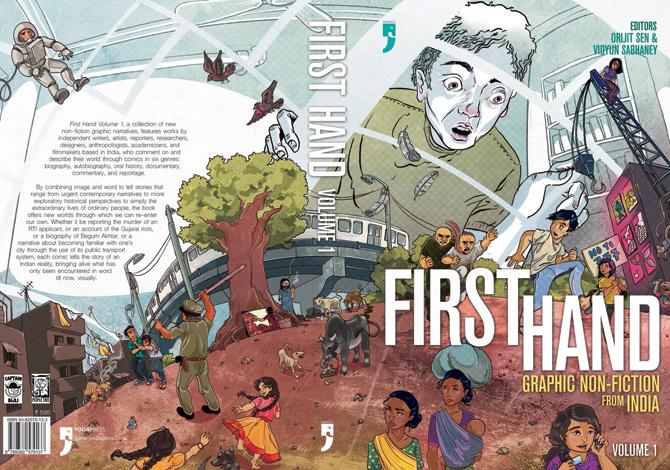
The selection of the stories was based on what gave a better perspective on the social, political and historical narratives of India: “We would favour a story on the Gujarat carnage or the effect of the new rape laws post-Nirbhaya.” The indomitable artist has for long been a critic of the Hindu hardliners and government extremism and this comes across in stories like Nawab and the Calcutta kid and hopes to keep drawing attention to these issues. “It is important that artists and some others like us who have a certain position of privilege and network to say the right things and question what is wrong,” he says.
 Subscribe today by clicking the link and stay updated with the latest news!" Click here!
Subscribe today by clicking the link and stay updated with the latest news!" Click here!







